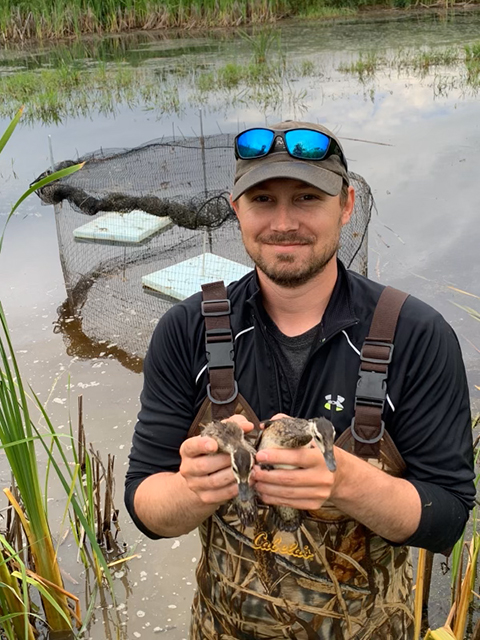The Kalispel Tribe is working to track down the flyways of northeast Washington migratory birds
By Mike Lithgow
As you head north down the Pend Oreille River in northeast Washington, you will come across a beautiful wide valley carved by ice and water. This valley contains some amazing waterfowl habitat, and the Kalispel Tribe’s Natural Resources Department (KNRD) is trying to better understand this migratory bird flyway.
Wildlife Biologist TC Peterson has jumped headfirst into studying the ducks and geese of this remote corner of Washington with waterfowl banding. Bands placed on a duck’s leg are made of lightweight aluminum and have a unique number on them. If the duck is captured, killed, or found dead, the number on the band can be reported to the USGS Bird Banding Laboratory. Information regarding the location and cause of death will be documented by the USGS. This information is incredibly important in helping advance our understanding of how these migratory birds utilize the landscape.

Though this research is in its infancy, the preliminary findings are very interesting. “So far, we have learned that we likely have a large breeding population of wood ducks and that they winter in California, mostly around Sacramento,” says Peterson. “We have also been able to learn that a large portion of the mallards winter on the Columbia near Tri-Cities and that the teal in the valley end up in Texas, but we don’t have enough bands on teal to have a good idea of what they are doing yet.”
In the future, KNRD hopes to expand the waterfowl banding program and deploy GPS trackers on species of interest to better understand the habitat use dynamics and migratory patterns during the spring migration. As this study matures, public outreach efforts will ramp up. Engaging the public through volunteer opportunities, web/social media content, and public presentations serves an important roll in building an advocacy for waterfowl and the habitat they depend upon.
If you would like to learn more about KNRD and their conservation efforts, contact mlithgow@kalispeltribe.com or call 509-370-8794.












